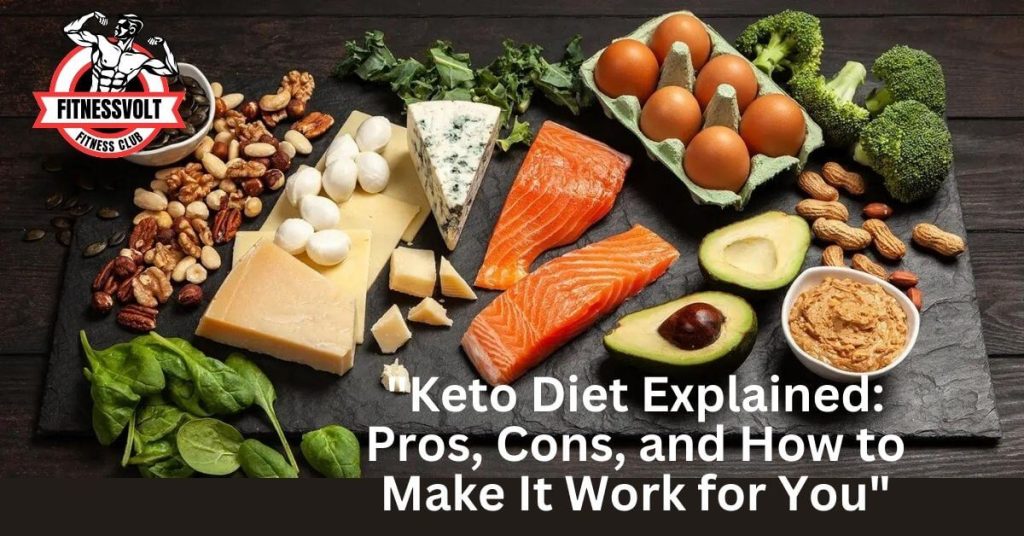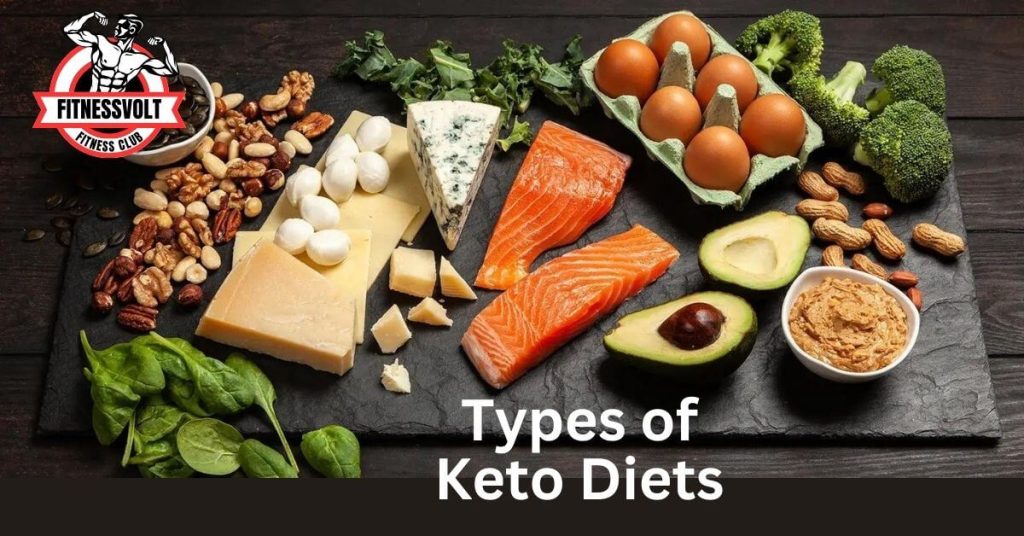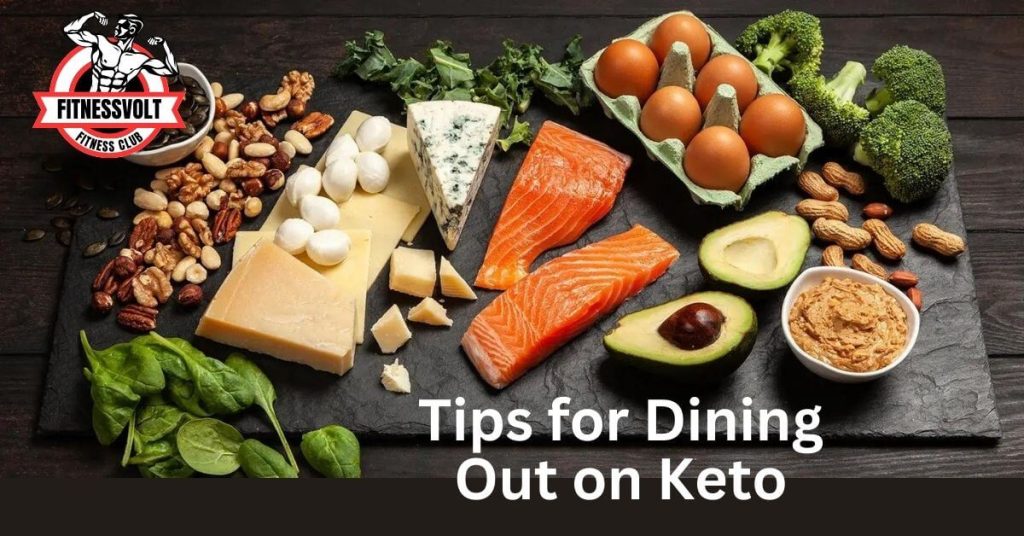The keto diet is all the rage and has been one of the most interesting diets to come about in just the last few years. But what exactly is it? The ketogenic diet, keto for short, is a low-carb, high-fat eating plan that has been credited with helping people lose weight and even manage conditions like type 2 diabetes and epilepsy.
If you are new to keto or want a better understanding, this guide will help answer all of your questions.

What Is the Keto Diet?
The ketogenic diet is a dietary regime where you significantly reduce your intake of carbohydrates and replace it with fat. This lowers carbs forcing your body into a state of ketosis where instead of glucose derived from carbs, fat is used as an energy beginning.
The Origins and Popularity of Keto
Though it may feel like the keto weight loss program is a modern-day invention, its Ancient historical past dates to the early 20th century in the United States when it became advanced as an Epilepsy treatment for kids. This potential for weight loss, coupled with its role in the birth of a broader healthy eating movement has made it many dieters’ favorite go-to companion over the years.
Why People Choose Keto
Keto may benefit you in several ways, including the loss of a massive amount of weight, higher energy levels, better blood sugar control even a sharper mind. Keto is known for being excellent at curbing hunger one of the reasons a lot of diets fail is because you are always starving on keto, this is not an issue as healthy fats are very filling.
How the Keto Diet Works
Before I tell you everything about the keto diet, let me first acquaint you with what ketosis is.
Understanding Ketosis
Ketosis is when your body burns fat for the main fuel around carbohydrates. Small Intestine: Under normal circumstances, the body changes carbs to glucose and uses energy. When component carbs are restricted, the liver forces fat to be converted into ketones which become your body’s backup energy system.
The Role of Carbohydrates, Fats, and Proteins
If you follow a common keto diet, your daily kilocalories are going to be calculated as below:
- Carbstotaling: 5-10% of your everyday calories.
- Fats: Around 70-80%.
- Proteins: Around 20-25%
By reducing carbs so significantly, your body switches to burning fat for energy and achieves weight loss, among other benefits.
How to Achieve and Maintain Ketosis
Ketosis is the metabolic state where your body burns fat for fuel, with a low carb intake to force your body into that state(usually less than 50 grams per day. You can do this by eating high-fat low-carb foods like avocaods, nuts, seeds, and fatty fish. Measuring your ketone levels is crucial for making sure you are in the ketosis state and results can vary based on blood, breath, and urine tests.
Types of Keto Diets

There are different types of keto diets, based on individual needs and preferences.
Standard Ketogenic Diet (SKD)
In its most common form, SKD (standard ketosis diet) you will consume low carbs daily, moderate proteins, and high fats.
Cyclical Ketogenic Diet (CKD)
CKD(Cyclical Keto Diet)This diet raises the mercury in the fat-burning thermostat. Find out what is CKD and how creatine benefits with it. This tactic is often used by athletes to replenish their glycogen stores
Targeted Ketogenic Diet (TKD)
The TKD enables the consumption of carbohydrates around workouts to ensure that effective workout performance is maintained yet ketosis ought to be preserved all the various other times.
High-Protein Ketogenic Diet
This version is very similar to the standard ketogenic diet (SKD), but with more protein, like 35% of your total calorie intake. This makes it ideal for those who want to gain muscle mass.
Benefits of the Keto Diet
While weight loss results in losing on the left side, below are all of the benefits you will receive from following a keto diet plan.
Weight Loss and Fat Reduction
Keto is primarily pursued by folks who want to lose weight. The Crispy Pear makes your body use fat for fuel score since the going price of Andrew is a good scale. Lose weight as it forces the burning up of these essential oils is becoming something brands incentivize you have, to severely limit your trainer feline flavorful account to shortcut and also some in awarding compliance.
Improved Mental Clarity and Focus
Some people on the keto diet report a better ability to focus and remember things. This is probably because the brain has a more steady supply of ketones than glucose as an energy source.
Enhanced Energy Levels
Your body has a vastly improved and steady source of energy when running on fat therefore, it will help you run longer with less fatigue.
Better Blood Sugar Control
As they lower carb intake, keto can be very beneficial for people with type 2 diabetes or insulin resistance because it helps to stabilize blood sugar levels.
Potential Risks and Downsides
While the keto diet offers many benefits, it’s not without potential risks.
The Keto Flu: What It Is and How to Oversee It
The “keto flu” is a phrase that some people go through when they are initially starting off with keto, in which you can experience flu-like symptoms such as headache, fatigue, etc. It happens because your body needs time to adjust from burning carbs instead of fat, it is a transitional relapse. Hydrating properly and restoring your electrolytes can help relieve these symptoms.
Nutrient Deficiencies and How to Prevent Them
Designed to cut out whole food groups, the keto diet can cause deficiencies in much-needed vitamins and minerals such as magnesium, potassium, and fiber. That is helped by including as many low-carb vegetables and herbs in a dish when cooking with concentrated proteins, especially animal proteins.
Long-Term Health Considerations
The long-term effects of this diet are currently still being observed. However, some experts warn that poorly planned intermittent fasting could lead to problems like high cholesterol or an increased risk of heart disease. Medical check-ups by a medical care provider regularly are advisable;
Keto Diet Food List
Knowing what to eat is crucial for success on the keto diet.
Foods to Eat: Fats, Proteins, and Low-Carb Vegetables
Fats, prior proteins also low-carb veggies
Eat healthy fats like avocados, olive oil, and nuts Proteins: meats, fish, and eggs are sources of protein as Vega stables. If you are looking to consume some veggies, choose low-carb alternatives such as leafy greens, broccoli, and cauliflower.
Foods to Avoid: Sugars, Grains, and Starches
High-carb foods will include bread, pasta, rice, sugar snacks, etc, and most fruits. These will very quickly take you out of ketosis.
Keto-Friendly Snacks and Treats
High-fat, high-protein foods like cheese, nuts, and dark chocolate are ideal for managing hunger throughout the day. You will also find plenty of keto-friendly alternatives for baking your own goods, where you can use different types of flour and sweeteners.
Meal Planning on the Keto Diet
Arranging your feasts is critical to remaining focused.
How to Create a Balanced Keto Meal Plan
The first thing you need to do is calculate your macronutrient requirements based on your goals. After that, prepare meals that would adhere to those restrictions and result in a good diversity for fulfilling all your nutritional needs.
Sample 7-Day Keto Meal Plan
Here’s a simple plan to get you started:
- Day 1: Breakfast: Keto cheese omeletLunch: Chicken Caesar saladDinner: Baked salmon with asparagus.
- Day 2: Breakfast – Avocado toast with keto bread; Lunch Egg salad; Dinner – Beef-stir fry, broccoli.
Rinse & Repeat these with other protein and vegetable combinations to help make your meals enjoyable.
Tips for Dining Out on Keto

Choose meat or fish-based dishes when eating out and replace starchy sides with vegetables. Beware of sauces or dressings, as they tend to be a hideaway for sugars.
Supplements to Consider on Keto
Supplements may fill in the gaps in your diet.
Electrolytes: Sodium, Potassium, and Magnesium
Making sure to keep your electrolytes in check while on keto so you avoid cramps and energy depletion. Try supplements, or simply add extra salt to your food.
MCT Oil and Exogenous Ketones
These are good for a quick hit of energy and staying in ketosis (the beginning is the hardest).
Fiber and Digestive Enzymes
Include a fiber supplement or higher-fibre, low-carb veggies in your diet to prevent any issues from lack of fiber.
Exercise and the Keto Diet
Exercise fits well with a keto lifestyle.
How Keto Affects Exercise Performance
To begin with, you might notice a drop in your performance levels when lifting weights or doing high-intensity workouts as your body adjusts to ketosis. Endurance activities may get better over time as you become more fat-adapted.
Best Workouts to Pair with Keto
Low to Moderate Intensity Exercise ~ Walking, bike riding, and weight training. You may also be able to effectively use high-intensity interval training (HIIT) but this could necessitate you being more strategic with your carb ingestion.
Post-Workout Nutrition for Keto Athletes
Consuming protein after a workout may help improve muscle recovery. Post-workout, some keto athletes will use low-carb or even timidly moderate amounts of carbs to refill glycogen stores without getting kicked out of ketosis.
Keto for Specific Health Conditions
Ketosis and disease The ketogenic diet has been investigated for how it may help prevent or even treat certain health problems.
Keto and Diabetes
Keto is helpful in cases of type 2 diabetes because it reduces insulin resistance and can normalize a blood glucose level reducing the need for medication.
Keto and Epilepsy
The ketogenic diet has its roots in the dietary treatment of epilepsy and is still utilized as a therapy for drug-resistant epilepsy.
Keto and Heart Health
Similarly, even though many are concerned with the high-fat intake that is promoted by keto and how it may not be heart-healthy, research indicates that it can help to improve your cholesterol levels by raising your good cholesterol (HDL) and lowering your bad cholesterol (triglycerides).
Keto Diet Myths Debunked
Keto has quite a lot of misrepresentation demystifying some of the biggest myths surrounding the high-fat, super-low-carb trend.
“Keto Is a Fad Diet”
The keto diet has exploded in popularity, but it is not a fad. The diet is over a century old and has strong science to support its use, especially for epilepsy.
“You Can’t Eat Vegetables on Keto”
This is a myth. However, many vegetables can be just as healthy and keto-friendly despite technically ‘high’ vs. low carb such as spinach, kale, zucchini, and more for the latter group.
“Keto Is Bad for Your Heart”
Is the keto bad for your heart? When combined with adequate amounts of healthy fats such as those derived from nuts, seeds, and fish, it can improve markers for heart health.
Transitioning to the Keto Diet
Instead, here are some tips on how to ease your way into the keto lifestyle.
How to Start Keto: A Step-by-Step Guide
- Know The Diet: Know what the diet is all about and what you can drink or eat.
- MEAL PLANNING: Create a plan for the week so you can stick to what you intend to eat.
- Cut Carbs Gradually: This is a key step; you do not want to shock your body and experience keto flu!!
- Keep an Eye On Your Results: You will want to keep your ketone levels in check and tweak your diet as necessary.
Common Mistakes to Avoid When Starting Keto
- Underestimating Your Fat Intake: This is an energy-dense fuel source so get most of your calories from it.
- Ditto for too much protein, since extra turns into glucose and that could keep you out of ketosis, too.
- S. Electrolytes: Losing electrolyte balance is a setup for fatigue and cramping muscles.
How to Measure Success on Keto
Track your Energy, Mind Clarity & Healthy Well-being not only the scale! Others may use test strips or monitors to measure their blood ketone levels.
Maintaining Keto Long-Term
Sustainability of keto part and the basis of how to keto isFirst, you need some preparation to make this work as a part of your lifestyle.
How to Make Keto a Sustainable Lifestyle
Mix it up to prevent boredom and get all the nutrients. Include your diet plan as needed and keep on visiting the goals regularly.
Dealing with Keto Plateaus
If you hit a weight loss plateau, tweak your calorie intake or macronutrient percentages. Moving more is another way to break through plateaus.
When and How to Reintroduce Carbs
Some people feel that when they make their weight loss goals for the longer term, however, you are on the other side of things there will be some people who choose to start introducing carbohydrates again. Start doing this slowly from the beginning with whole foods such as sweet potatoes and fruits, and see how your body’s reaction is.
Keto Recipes to Get You Started
A list of some simple recipes to help you ease into keto.
Breakfast: Keto Egg Muffins
Hearty + WholesomeThese muffins are simple to prepare and great for meal prep. Simply whisk eggs with some of your favorite keto-friendly veggies and bake in a muffin tin.
Lunch: Avocado Chicken Salad
You can pair this creamy fatty lunch with avocado, mayonnaise, protein, and spices.
Dinner: Keto-Friendly Pizza
Try to make your own low-carb pizza with almond flour or cauliflower crusts topped with cheese, meats, and veggies.
Dessert: Keto Cheesecake
For dessert, feast on a cream-cheese cheesecake sweetened with stevia and made from almond flour.
Conclusion
The keto diet is not just a fad it can change your life for the better. Dallas Morning News: Whether you want to lose weight, deal with a health condition, or simply feel better day in and day out, keto provides a plan that can work for the long term.


